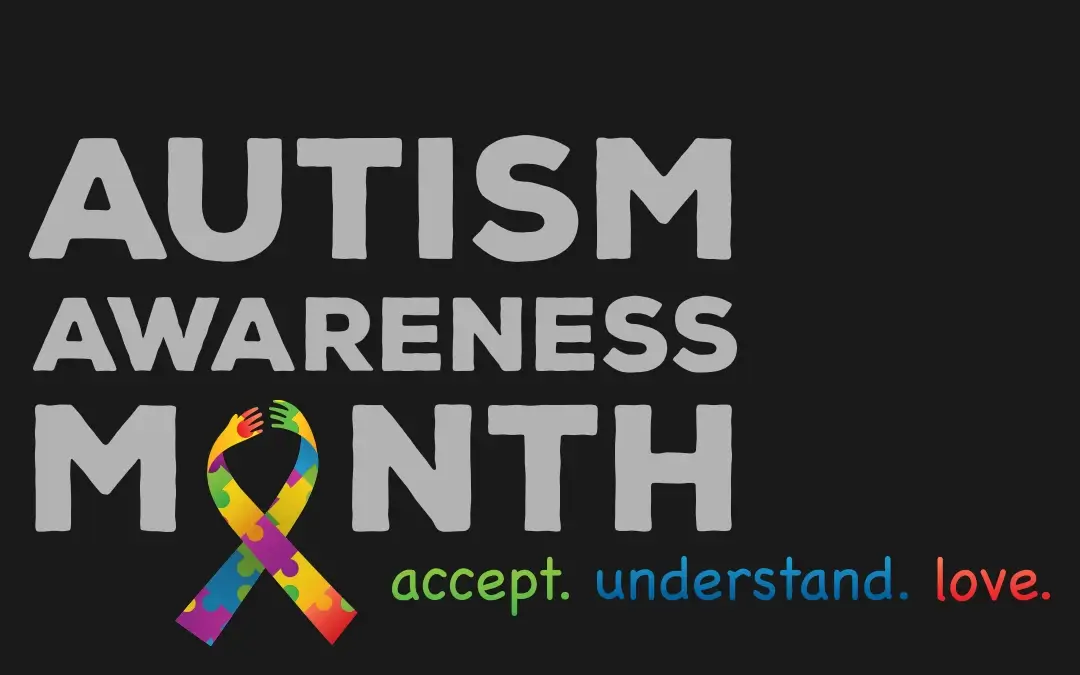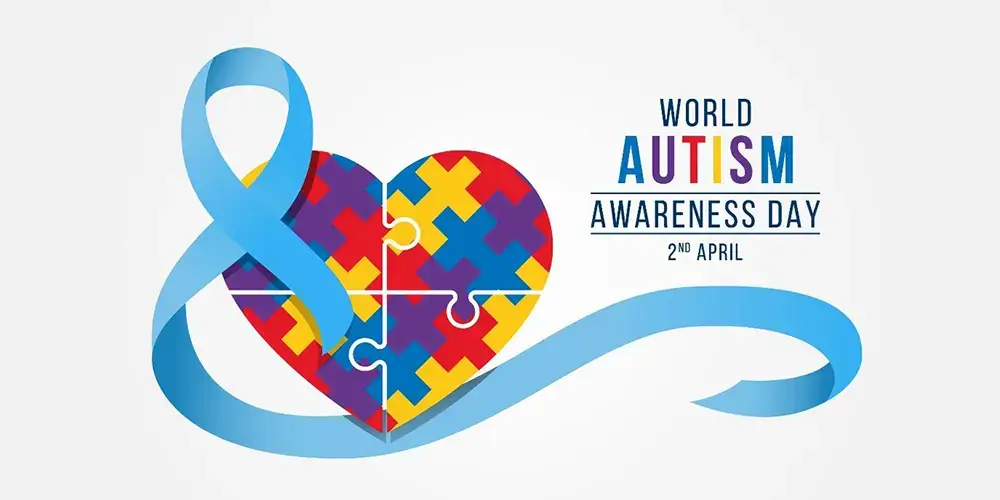In today’s increasingly diverse society, promoting acceptance and understanding is essential. Autism Awareness Month, celebrated in April every year, plays a crucial role in embracing diversity and fostering community engagement. With an estimated 1 in 59 children diagnosed with autism spectrum disorder (ASD) in the United States, it is vital to raise awareness and combat the misconceptions surrounding this condition. During Autism Awareness Month, advocates, organizations, and communities come together to promote acceptance and inclusion for individuals on the autism spectrum.
Through various events, campaigns, and educational initiatives, the month aims to break down barriers and create a more welcoming environment for individuals with autism. By shedding light on the unique strengths and challenges of those with autism, Autism Awareness Month encourages society to embrace neurodiversity. It fosters understanding and empathy, promoting inclusivity in schools, workplaces, and communities. Joining the movement during Autism Awareness Month allows individuals and organizations to demonstrate their support and commitment to building a more accepting and inclusive society for everyone, regardless of their abilities. It is an opportunity to celebrate differences, promote acceptance, and create a sense of belonging.
What is Autism Awareness Month?
Autism Awareness Month is an annual observance that takes place every April. Its primary aim is to increase public awareness about autism, a neurodevelopmental disorder that affects social interaction, communication, interests, and behavior. This month-long campaign is dedicated to promoting acceptance and understanding for individuals living with autism.
Autism Awareness Month is a time when advocates, organizations, families, and communities around the world come together to promote understanding and acceptance of people living with autism. It is a period of heightened activity, marked by a range of events and initiatives designed to foster acceptance and community engagement.
The core message of Autism Awareness Month is one of diversity and inclusion. It underscores the fact that every individual, regardless of their abilities or disabilities, has unique strengths and challenges. The key to embracing diversity lies in understanding, accepting, and appreciating these differences.

The Importance of Promoting Acceptance and Community Engagement
Promoting acceptance and community engagement is a vital part of Autism Awareness Month. Acceptance is about recognizing and valuing the differences that individuals with autism bring to our society. It means acknowledging their abilities, rather than focusing solely on their challenges.
Community engagement, on the other hand, involves creating opportunities for individuals with autism to participate actively in community life. This includes providing suitable educational opportunities, employment options, and social activities that cater to their unique needs and strengths.
Engaging the community also helps break down barriers and dispel misconceptions about autism. When people understand what autism is and how it affects individuals, they are more likely to be accepting and inclusive. This, in turn, creates a more welcoming environment for individuals with autism.
The History of Autism Awareness Month
The history of Autism Awareness Month can be traced back to 1970, when the Autism Society, an American advocacy organization, launched a nationwide effort to raise awareness about autism. This initiative, known as National Autistic Children’s Week, eventually evolved into Autism Awareness Month.
In 2007, the United Nations officially recognized April 2 as World Autism Awareness Day. This global observance, which falls within Autism Awareness Month, further amplifies the message of acceptance and inclusivity.
Today, Autism Awareness Month is observed in many countries around the world. It serves as a powerful platform for advocates, organizations, and communities to share information about autism, promote acceptance, and encourage community engagement.
How Autism Awareness Month Raises Awareness About Autism
Autism Awareness Month plays a pivotal role in raising awareness about autism. It does this through a variety of ways, from hosting educational events and campaigns to leveraging social media platforms to spread information about autism.
One of the key strategies used during Autism Awareness Month is to highlight the personal stories and experiences of individuals with autism. By sharing these narratives, the campaign humanizes the condition, helping others to understand and empathize with those affected by autism.
Autism Awareness Month also highlights the latest research findings on autism. This includes information on early detection, intervention strategies, and the benefits of a supportive environment for individuals with autism. By keeping the public informed about the latest developments in autism research, Autism Awareness Month plays a critical role in promoting understanding and acceptance.
Events and Initiatives During Autism Awareness Month
During Autism Awareness Month, a myriad of events and initiatives take place around the globe. These range from educational workshops and seminars to fundraising events and social media campaigns.
One of the most well-known initiatives is the “Light It Up Blue” campaign by Autism Speaks, an advocacy organization based in the United States. As part of this campaign, landmarks, homes, and businesses around the world are illuminated in blue light on April 2, World Autism Awareness Day. This creates a visual reminder of the need for acceptance and understanding of individuals with autism.
Another popular initiative is the Autism Awareness Puzzle Ribbon, the universal symbol for autism. During Autism Awareness Month, individuals and organizations are encouraged to wear the puzzle ribbon as a show of support for people with autism.
Promoting Inclusivity and Understanding in Schools and Workplaces
Promoting inclusivity and understanding in schools and workplaces is a significant aspect of Autism Awareness Month. Schools play a critical role in fostering acceptance among children and young people. During this month, schools often host special assemblies, workshops, and activities designed to educate students about autism and promote acceptance.
In workplaces, Autism Awareness Month is an opportunity to highlight the unique strengths that individuals with autism can bring to a job. Many organizations use this time to provide training for their employees, helping them to understand and support colleagues with autism.
Moreover, companies are encouraged to explore employment opportunities for individuals with autism, recognizing the diverse range of skills and abilities they can contribute to the workforce.

How Individuals and Organizations Can Get Involved
There are numerous ways for individuals and organizations to get involved during Autism Awareness Month. Some people choose to participate in local events or fundraising activities. Others may decide to spread awareness through their social media platforms or by wearing the danatoto.
Organizations can get involved by hosting educational events or training sessions for their employees. They can also show their support by participating in initiatives like the “Light It Up Blue” campaign, or by making a commitment to employ individuals with autism.
Another effective way to get involved is by advocating for policies that promote inclusivity and acceptance for individuals with autism. This could involve lobbying for better educational resources, more inclusive employment practices, or improved support services for individuals with autism and their families.
Personal Stories and Experiences of Individuals with Autism
Personal stories and experiences of individuals with autism are a powerful tool for raising awareness and promoting understanding. These narratives provide a firsthand perspective of what it’s like to live with autism, offering insights into the unique challenges and triumphs experienced by those on the spectrum.
During Autism Awareness Month, many individuals with autism choose to share their stories, either in person at events, through social media, or via blogs and articles. These personal narratives help to humanize autism, breaking down stereotypes and fostering empathy and understanding.
Hearing these personal stories encourages us to view autism not as a disability, but as a different way of experiencing the world. It reminds us that each individual with autism has their own strengths, abilities, and potential.
Resources and Support for Individuals and Families Affected by Autism
Autism Awareness Month is also about providing resources and support for individuals and families affected by autism. Many organizations offer information on understanding autism, coping strategies, and available support services.
Resources include educational materials, training programs, support groups, and counselling services. These resources can help individuals with autism and their families navigate the challenges of autism and lead fulfilling lives.
Autism Awareness Month is also a time to acknowledge and appreciate the caregivers and educators who play a crucial role in supporting individuals with autism. Their dedication and commitment are instrumental in improving the lives of those affected by autism.
The Impact of Autism Awareness Month and the Ongoing Need for Acceptance and Inclusion
The impact of Autism Awareness Month is profound. It raises awareness about autism, promotes acceptance and understanding, and fosters community engagement. However, the need for acceptance and inclusion extends beyond just one month. It is an ongoing effort that requires the commitment of individuals, organizations, and communities.
Autism Awareness Month reminds us that embracing diversity is not just about tolerating differences, but actively appreciating and valuing them. It challenges us to look beyond labels and see the unique strengths and potential in every individual.
As we move forward, let us take the spirit of Autism Awareness Month with us. Let us continue to promote acceptance and inclusivity, not just for individuals with autism, but for everyone, regardless of their abilities or disabilities. After all, a society that embraces diversity is a society that truly flourishes.
Also read: Apple Pie Dessert Bliss: Elevating Your Taste Buds



